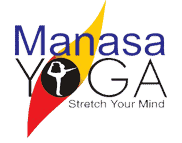Your cart is currently empty!

Your cart is currently empty!
Headache, though a common malady, occurs in different people for different reasons. For eg, it can be due to the...

Headache, though a common malady, occurs in different people for different reasons. For eg, it can be due to the swelling of sinus cavities in some eye strain in another, as well as high blood pressure, indigestion, menses, emotional upsets, exposure to sun, etc.
However, the most common type of headache is what is categorised as tension headache. It occurs due to excessive tightness of the muscles of the neck, shoulders, scalp and jaw. Tension headache too, on its part, can occur due to a host of reasons. Such as when the head is held for a long time tipping to the front of the spine, typically when we are using a computer. Then the muscles of the neck and shoulders, especially the trapezius and the semi spinalis capitis are in a state of constant tension, eventually precipitating into a headache. In yoga asana practice too, sometimes a sequence of backbends can induce a tension headache, if the student is continuously trying to move the head back, which compresses and tenses the back of the neck.
Remember, in Manasa, awareness is the refuge. Just start noticing how you hold your head as you flow through the activities of the day. A posture where the back is rounded and the head is held forward can surely lend a hand in developing headache due to muscle fatigue. It can also cause shallow breathing due to the closing of the chest. This has the potential to trigger the sympathetic nervous system, which among other stress reactions, also contracts the muscles more, eventually cascading the headache into a full blown migraine.
So don’t wait for yoga at the studio only. Start on the asana principles at your workplace itself; every now and then take a neck break from work; align your head over your spine; roll your shoulders back and down; and if your arms were always held in front of the body, then you can take them back into the reverse namaste position, and press the shoulder blades down, simultaneously lengthening the sides of the skull upwards. Take some nice deep breaths.
To your question whether to come to class or not, you definitely can. But best to avoid sequences where the arms are taken up and back repeatedly (eg. sun salutes) as they can again tense the muscles around the head. Also abrupt changes in pressure at the skull area, such as quickly moving from standing forward bend to standing arch, and then again to standing forward bend, might caused the pain to flare up.
Go to class, but with the permission of the teacher, do the following modifications to your practice:
Remember, though I seem to be advising against the more dynamic asana practices, there can be many who will vouch that the same practices have relieved their headaches. So there is no single correct answer. If the headache is caused by emotional reasons, where the mind just cannot “un-cling” from the agitating currents of thoughts, an active asana session with strong emphasis on alignment and breath can really help to do just that. Once the student gets a release from that loop of thought, perhaps she might get a release from the headache, too.
So you are free to try out for yourself, and if you find the active practices worsening your pain, then go by the more restorative practices as mentioned above.
Having said this, if these lifestyle postural awareness and adjustments together with asana and breathing practice don’t bring any relief, make sure you get a quick medical examination done to assess other possible causes of your headache.
